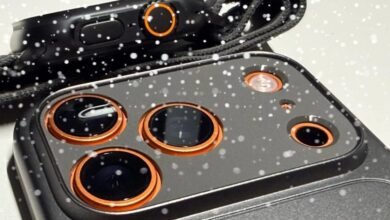AirPods Pro 3 Review: The Perfect Imperfect Earbuds

▼ Summary
– The author initially viewed AirPods Pro as functional but unremarkable earbuds until the AirPods Pro 3’s heart rate monitor feature addressed their personal health monitoring needs.
– The AirPods Pro 3 features significant physical improvements including a redesigned shape for better fit, hybrid ear tips, and enhanced waterproofing and noise cancellation.
– Sound quality has shifted to a more V-shaped signature with boosted bass and treble, which is divisive among audio enthusiasts and lacks customizable EQ options.
– Heart rate monitoring integrates seamlessly into daily use for fitness tracking, though performance depends on proper fit and it shouldn’t replace medical devices.
– The Live Translation beta feature performs poorly with delays, inaccuracies, and interruptions, making it unreliable for practical use despite being a marketed AI innovation.
For many iPhone users, the AirPods Pro 3 represent a significant step forward in wearable technology, particularly for those deeply embedded in the Apple ecosystem. They deliver a seamless user experience that feels almost effortless. My own journey to purchasing them, however, was driven by a very specific health concern rather than a simple desire for an audio upgrade.
A personal health scare last year left me constantly aware of my own heartbeat. My doctor eventually assured me everything was fine, but the lingering anxiety made me search for a simple way to keep a casual eye on my heart rate. The wearables market is a confusing landscape of smartwatches, rings, and fitness bands, most of which I found unappealing due to their designs, screens, or subscription fees. I had resigned myself to this dilemma until Apple announced the AirPods Pro 3 would include integrated heart rate sensors. This was the elegant solution I needed, a device I already used daily that could now provide health insights without changing my behavior.
The physical design of the AirPods Pro 3 has been noticeably refined. The case is slightly different, meaning your old accessories won’t fit. More importantly, the earbuds themselves are shaped more like a human ear canal, creating a much more secure and intimate fit. This isn’t just for comfort; it’s essential for the heart rate monitors to function accurately. The new hybrid ear tips combine the durability of silicone with the superior seal of foam, addressing a common failure point of previous models. This enhanced fit also contributes to the phenomenal active noise cancellation, which is so effective it can make you miss your bus stop by completely isolating you from the world.
However, the audio performance is where opinions sharply divide. The sound signature has shifted dramatically from the inoffensive, crowd-pleasing tuning of the AirPods Pro 2. Apple has opted for a deeper “V-shape,” emphasizing a much more substantial bass response and a sharper, more pronounced treble. While some may find this sound exciting, it walks a razor-thin line between clarity and listener fatigue. This bold change has alienated many audio enthusiasts who preferred the more neutral and natural sound of the previous generation. The lack of a built-in parametric equalizer to adjust the sound back to a more familiar profile feels like a major oversight, especially when even budget earbuds offer this basic feature.
Thankfully, the headline feature, heart rate monitoring, works impressively well. The sensors in each bud provide seamless integration within the Apple ecosystem. For casual tracking during the day or continuous monitoring during workouts via the Fitness app, they perform admirably. Achieving a consistent reading requires a proper, snug fit, and some users have even sized down their ear tips for better accuracy. While you shouldn’t treat them as a certified medical device, the ability to have this health-tracking capability in a product you already wear is a remarkable achievement.
Another new feature, the Live Translation beta, feels more like a glimpse into the future than a practical tool today. The idea of a real-time universal translator in your ear is compelling, but the current execution is fraught with issues. There’s a significant delay, translations can be incoherent, and ambient noise easily disrupts the process. Trying to use it for watching foreign films results in a surreal and frustrating experience. Its only plausible use case currently is for very clear, simple phrases spoken directly to you in a quiet environment.
Ultimately, the AirPods Pro 3 is a product of contradictions. It excels as a health and lifestyle gadget, with generational improvements in battery life, waterproofing, noise cancellation, and fit. It solved a personal wearable problem for me that nothing else could. For podcasts and calls, they are fantastic. Yet, the polarizing sound tuning feels uncharacteristically showy and out of step with Apple’s usual design philosophy. They created the most advanced earbuds on the market, only to make them sound a bit cheap to discerning ears. While a simple software update could introduce some sound customization, it seems unlikely Apple will admit a misstep. For now, they remain the perfect imperfect earbuds, a marvel of integration held back by a questionable audio choice.
(Source: Aftermath)





